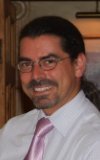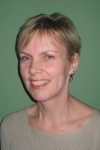Advances in Research and Industrial Application of Experimental Mechanics
NAFEMS Webinar Series
The focus of the webinar is ‘experimental mechanics’ which can be defined as the application of experimental techniques for analysis of loaded structural components. The webinar starts with a brief introduction to experimental mechanics techniques and their application. The second presentation is a detailed description of the application of such techniques in the aircraft industry with attention on the benefit to design. The third presentation demonstrates the reach of experimental mechanics and how it can be used to analyse complex ultrasonic machining process mainly with medical applications.
This research webinar has been organised by the British Society for Strain Measurement (BSSM) on behalf of the Forum of Applied Mechanics.
Introduction
The purpose of the introduction was to introduce the wide ranging topic of experimental mechanics and provide some example applications. The introduction described some of the British Society for Strain Measurements activity and its close association with the Forum for Applied Mechanics.
The Importance of Experimental Mechanics in Solving Aerospace Problems
Airbus is one of the world's leading aircraft manufacturers of airliners with more than 100 seats. The Airbus product line comprises 14 aircraft models, from the 100-seat single-aisle A318 jetliner to the 525-seat A380 (which is the largest civil airliner in service), it's total fleet of delivered aircraft being almost 5,500. Airbus has expanded into the military transport aircraft sector. The A400M multi-role military airlifter - being produced under management of the Airbus Military company - will replace fleets of ageing C-130 Hercules and C-160 Transalls beginning in 2009. In addition, aerial tankers for in-flight refuelling and transport missions are available in aircraft variants derived from the A310 and A330.
For more than 20 years Experimental Mechanics (EM) has played a prominent role at Airbus in research, design, development and in-service inspection of Airbus aircraft. The main reason for this is that EM techniques, particularly full-field optical methods, are very powerful and provide high quality data to support analysis and design. The Experimental Mechanics group at Airbus has over the years developed into a team which implements and advises on many techniques, namely: Strain gauge technology, Photoelasticity, Moiré or fringe based methods, ESPI, Digital Image Correlation, Residual Stress determination including Neutron and Synchrotron Diffraction, incremental centre hole drilling and layer removal.
This presentation entitled 'The Importance of Experimental Mechanics in Solving Aerospace Problems' aims to demonstrate that many Experimental Mechanics methods are alive and well and being used to advance the state of the art in Aerospace Engineering. The presentation showed the versatility and broad applicability of EM methods, how they are used for much more than material or structural testing and assist engineers to obtain better understanding of materials and structures allowing more extensive optimisation.
Applications of Power Ultrasonics in Engineering
Power ultrasonics is a branch of ultrasonics that uses the vibrational energy of a device oscillating at an ultrasonic frequency in order to effect a physical change in a medium. This differentiates power ultrasonics from diagnostic (or imaging) ultrasound. The frequencies used in power ultrasonic applications are usually in the low ultrasonic range, of 20-100 kHz, and the power requirements, usually tens of watts to several kiloWatts, are usually significantly higher that those required in other ultrasonic applications, although these boundaries are becoming increasingly blurred. Applications of power ultrasonics in engineering are growing and now encompass a wide variety of industrial processes and medical procedures. However, the mechanism by which a process can benefit from power ultrasonics is not common for all applications and can include one or more of such diverse mechanisms as acoustic cavitation, heating, microfracture, surface agitation and chemical reactions. This presentation gives an overview of some of the current applications being researched within the power ultrasonics group at the University of Glasgow, including bacterial inactivation, food cutting and drilling for planetary rock sample retrieval.
Agenda
Welcome & Introduction
Prof. Janice Barton
The Importance of Experimental Mechanics in Solving Aerospace Problems
Dr. Richard Burguete, Airbus UK
Applications of Power Ultrasonics in Engineering
Prof. Margaret Lucas, Ph.D., University of Glasgow
Closing
Back to All Webinars

 Professor Janice (Dulieu-) Barton has worked in experimental mechanics and non-destructive testing since 1989 and has published around 170 papers on these topics. She received a BSc in Mechanical Engineering in 1988 from the University of Salford and a PhD from the University of Manchester in 1993. Currently she is a Professor Experimental Mechanics in the School of Engineering Sciences at the University of Southampton. Dr Barton’s primary research interest is in thermoelastic stress analysis. Other interests include: damage analysis of composite/ sandwich/ textile materials, crack-tip stress studies, acoustic emission (AE) based damage characterisation in composites and small scale full-field experimental stress analysis.
Professor Janice (Dulieu-) Barton has worked in experimental mechanics and non-destructive testing since 1989 and has published around 170 papers on these topics. She received a BSc in Mechanical Engineering in 1988 from the University of Salford and a PhD from the University of Manchester in 1993. Currently she is a Professor Experimental Mechanics in the School of Engineering Sciences at the University of Southampton. Dr Barton’s primary research interest is in thermoelastic stress analysis. Other interests include: damage analysis of composite/ sandwich/ textile materials, crack-tip stress studies, acoustic emission (AE) based damage characterisation in composites and small scale full-field experimental stress analysis.  Richard Burguete was awarded his MEng (1990) and PhD (1994) by the University of Sheffield. Since 1997 he has been an engineering specialist at Airbus UK in the Experimental Mechanics group, responsible for the development and application of a variety of experimental mechanics methods including: Digital Image Correlation, Moiré methods, Fringe projection, Electronic Speckle Pattern Interferometry, Neutron and Synchrotron Diffraction, Incremental Centre Hole Drilling and other mechanical stress relaxation techniques. These methods are primarily used for the measurement of deformation and strain during major structural and minor component tests and for the determination of residual stress. He was Chairman of the British Society for Strain Measurement from September 2004 to September 2006 and is a member of the editorial board for 'Strain', the journal of EURASEM. He is co-chair of VAMAS TWA26 which is responsible for the development of standards in optical strain measurement. Richard also sits on a number of advisory panels and boards including the EPSRC Peer Review College. He received the Brewer award from the SEM in 2006.
Richard Burguete was awarded his MEng (1990) and PhD (1994) by the University of Sheffield. Since 1997 he has been an engineering specialist at Airbus UK in the Experimental Mechanics group, responsible for the development and application of a variety of experimental mechanics methods including: Digital Image Correlation, Moiré methods, Fringe projection, Electronic Speckle Pattern Interferometry, Neutron and Synchrotron Diffraction, Incremental Centre Hole Drilling and other mechanical stress relaxation techniques. These methods are primarily used for the measurement of deformation and strain during major structural and minor component tests and for the determination of residual stress. He was Chairman of the British Society for Strain Measurement from September 2004 to September 2006 and is a member of the editorial board for 'Strain', the journal of EURASEM. He is co-chair of VAMAS TWA26 which is responsible for the development of standards in optical strain measurement. Richard also sits on a number of advisory panels and boards including the EPSRC Peer Review College. He received the Brewer award from the SEM in 2006.  Margaret Lucas studied for her Bachelors degree in Mechanical Engineering at the University of Aberdeen, followed by a Masters degree, researching vibration monitoring of induction machines. Subsequently she studied for a PhD as a Research Associate at Loughborough University, investigating the effects of high power ultrasonic vibrations on the shaping of metal cans in resonant dies.
Margaret Lucas studied for her Bachelors degree in Mechanical Engineering at the University of Aberdeen, followed by a Masters degree, researching vibration monitoring of induction machines. Subsequently she studied for a PhD as a Research Associate at Loughborough University, investigating the effects of high power ultrasonic vibrations on the shaping of metal cans in resonant dies. 
